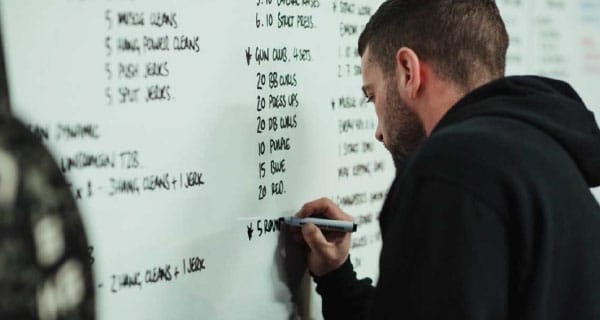
How To Write Your Own Strength Program
Introduction:
Strength training is arguably one of the most important components to an athlete’s routine. From injury prevention to increasing athletic performance a good strength program is the base to every athlete’s success. However, where to start when writing a strength program? What type of exercises do I include? How many sets and reps?
By the end of this blog you will be able to answer these questions.
Step 1: Identifying Your Goals/Needs:
Before selecting any exercises you must first identify what you want out of your program. Do you want to become stronger? Gain more muscle? Run faster? Jump higher?
How many days do you want to lift? Have you had any previous injuries?
Example:
- You want to gain muscle mass
- Jump higher
- Lift 3 days a week
- Previously rolled your left ankle
Step 2: Choose Your Main Exercises and Split
You should have 1-2 compound exercises (integrated movements), some plyometrics, core and accessories.
The compound exercises can be further broken down into:
- Lower Body Knee Dominant: Bilateral (Squats) & unilateral (Lunge) variations
- Lower Body Hip Dominant: Bilateral (Hinge) and unilateral (Bridge) variations
- Upper Body Push: Horizontal (Push) and Vertical (Press) variations
- Upper Body Pull: Horizontal (Row) and Vertical (Pull) variations
Plyometrics can be broken down into:
- Landing/positional awareness
- Single effort
- Repeat efforts
- Drop/depth efforts
- Maximum efforts
Core can be broken down into the following:
- Anti movements
- Functional movements
Accessories: Are single joint exercises which should address weaknesses or previous injuries, commonly broken down into the following sections:
- Ankle
- Knee
- Hip
- Back
- Shoulder
Types Of Training Splits:
- Compound (whole body)
- Lower body
- Upper body
- Accessory (mobility/recovery days)
Step 3: Reps, Sets, Intensity and Rest
Strength:
- Reps: 1-5
- Sets: 4-6
- Intensity: 85-100% of 1RM
- Rest: 3-5 mins
Hypertrophy (Muscle Growth):
- Reps: 10-12
- Sets: 3-5
- Intensity: 65-85% of 1RM
- Rest: 1-3 mins
Endurance/General Fitness:
- Reps: 12+
- Sets: 2-3
- Intensity: <65% of 1RM
- Rest: 30-90 sec
Pro Tip: Progressively add weight/load each week (<5%)
Step 4: Write Your Own Program
Here is an example of a lower, upper and compound session which you can follow.
Lower:
1A: Squat Variation 4 sets 10 reps
1B: Continuous Plyometric 4 sets 15 secs
2A: Single Leg Hip Dominant Variation 4 sets 8 reps
2B: Antirotation Core Variation 4 sets 8 reps
3A: Knee Accessory 3 sets 12 reps
3B: Ankle Accessory 3 sets 12 reps
Upper:
1A: Bench Press Variation 4 sets 10 reps
1B: Row Variation 4 sets 8 reps
2A: Shoulder Press Variation 4 sets 8 reps
2B: Pull Up Variation 4 sets 8 reps
3A: Flexion/Extension Core Variation 3 sets 8 reps
3B: Tricep Accessory 3 sets 12 reps
Compound:
1A: Bridge Variation 4 sets 12 reps
1B: Max Effort Plyometric Variation 4 sets 3 reps
2A: Single Leg Knee Dominant Variation 3 sets 8 reps
2B: Bench Press Variation 3 sets 10 reps
3A: Lat Accessory 3 sets 10 reps
3B: Rotational Core Variation 3 sets 8 reps
3C: Ankle Accessory 3 sets 12 reps
Final Thoughts
Writing your own program doesn’t have to be complicated, just follow the 4 simple steps:
- Identify Your Needs/Goals
- Choose Your Main Exercise and Split
- Reps, Sets, Intensity and Rest
- Write Your Program
You should aim to change your exercises and sets/reps every 4-6 weeks to reduce the likelihood of plateau. Your ideal program should be challenging but also sustainable. Stay simple, stay consistent and the increases in performance will come!
Our recommendation is to focus on whole body exercises rather than isolated training. The more you move, the better your program will be.
Hitting the gym and only doing bicep curls or tricep pushdowns, sadly won’t help you become a better athlete.
If you have any questions, reach out to myself via: info@srasportstherapy.com.au
– Benjamin Galea
High Performance Manager – SRA Sports Therapy

